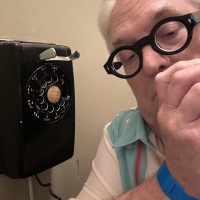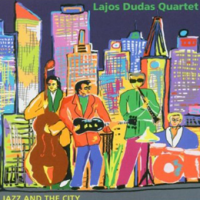Home » Jazz Articles » Book Review » Ted Gioia: The History of Jazz (Second Edition)
Ted Gioia: The History of Jazz (Second Edition)
 The History of Jazz (Second Edition)
The History of Jazz (Second Edition)Ted Gioia
Hardcover; 452 pages
ISBN: 0195399706
Oxford University Press
2011
For the past 25 years, author and teacher Ted Gioia has provided the most succinct and contemporary histories of America's native musics: blues and jazz. He has done this through his exceptional facility for taking all the previous literature, separating the wheat from the chaff, correcting the errors and myths, and burnishing a brand new shine on the music whole. His four histories: West Coast Jazz: Modern Jazz in California 1945-1960 (Oxford University Press, 1992), The History of Jazz (Oxford University Press, 1997), Delta Blues: The Life and Times of the Mississippi Masters Who Revolutionized American Music (W.W. Norton & Co., 2009) and The Birth (And the Death) of the Cool (Speck Press, 2009) remain the appropriate starting places for a written introduction to blues and jazz.
Gioia reprises The History of Jazz as a second edition, expanding dramatically the back end of the text to include a discussion of jazz in the 21st century. On his way to this coda, Gioia flings wide his research net, capturing and incorporating a myriad of social, political and artistic observations into his narrative, deepening both his explanation of and broadening the significance of jazz in the overall structure of American, and world, art.
Expanded is chapter 8 of the First Edition, originally entitled, Freedom and Beyond. In the Second Edition, that one chapter has been expanded into a new chapter 8, Freedom and Fusion, chapter 9, Traditionalists and Postmodernists, and chapter 10, Jazz in the New Millennium, in keeping with the overall atomization that has been occurring in jazz. Gioia's elaboration of these later chapters kicks off properly from chapter 7, The Fragmentation of Jazz Styles, where the author notes the music's exponential splintering after the zenith of modern jazz or be bop as manifested in the reactionary rise of both the traditional jazz revival of the late 1940s and '50s and the development of cool jazz, hard bop, post bop, etc. This chapter is pivotal to understand the evolution of jazz. What was to happen to jazz over the next three decades could be compared to reaching a musical critical mass where a self-sustaining chain reaction takes place.
This is where the author's narrative, densely packed with information, reaches a steady-state where each paragraph describes another innovation or innovator, all following in logical narrative sequence: Miles Davis (nonet, Newport 1955, "Walkin'" first great quintet) to Paul Chambers to Gil Evans to Cannonball Adderley to Bill Evans and Kind of Blue (Columbia, 1959) to John Coltrane unchained, and on. This is his most scintillating writing.
Throughout the entire study, Gioia writes his best the recounting these "hinges" of jazz, those pivotal moments where all things changed because of a groundbreaking innovator Louis Armstrong recording his Hot Fives and Sevens, Duke Ellington and his Jimmy Blanton recordings, Charlie Parker's Dial sides, John Coltrane's classic Quartet, Miles Davis' nonet and classic quintets, Ornette Coleman's Atlantic sides, Coltrane, again in Zenith. He focuses in and then spreads his discussions beyond the musical realm into the cultural, economic and political. Gioia is careful and meticulous in presenting jazz's evolution over these "hinges" being sure to describe all of the creative pressures influencing each genre and subgenre.
The revised material does well to bring the reader up to current date in a music evolving so fast that a new chapter will be experienced every five years. Gioia's keen eye notes this and we can only hope that a third edition will further clarify one of our true cultural gifts...jazz.
Tags
Book Reviews
C. Michael Bailey
United States
Miles Davis
Paul Chambers
Gil Evans
Cannonball Adderley
Bill Evans
John Coltrane
Louis Armstrong
duke ellington
Jimmy Blanton
Charlie Parker
PREVIOUS / NEXT
Support All About Jazz
 All About Jazz has been a pillar of jazz since 1995, championing it as an art form and, more importantly, supporting the musicians who make it. Our enduring commitment has made "AAJ" one of the most culturally important websites of its kind, read by hundreds of thousands of fans, musicians and industry figures every month.
All About Jazz has been a pillar of jazz since 1995, championing it as an art form and, more importantly, supporting the musicians who make it. Our enduring commitment has made "AAJ" one of the most culturally important websites of its kind, read by hundreds of thousands of fans, musicians and industry figures every month.




















